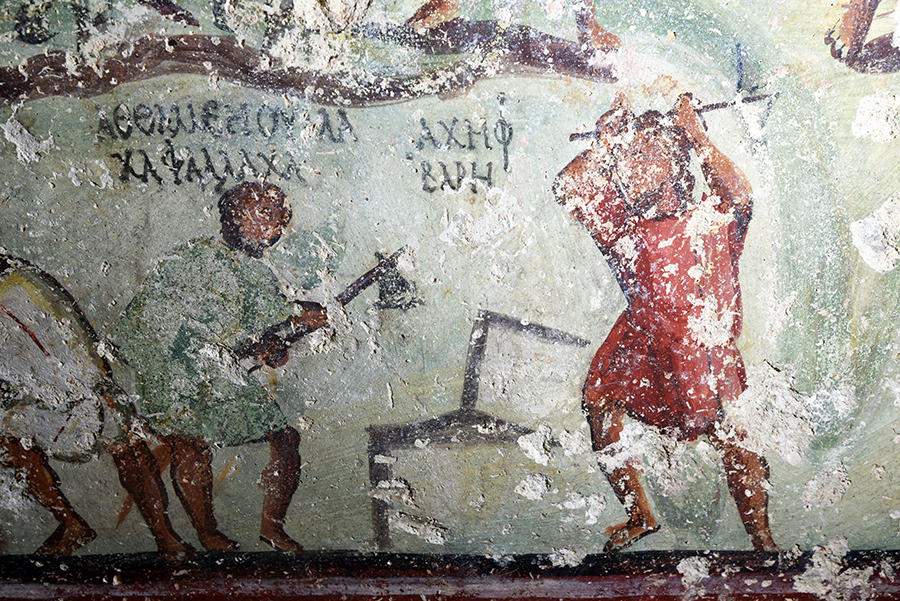In Jordan, an archaeological excavation by the Jordanian Ministry of Antiquities conducted by CNRS(Centre National dela Recherche Scientifique, France’s leading research organization) has led to the discovery of an ancient Roman tomb near the village of Bayt Ras. The burial, measuring 52 square meters, was part of a necropolis located near the ancient city of Capitolias, founded in the first century AD. It is a tomb consisting of two burial chambers that contains a sarcophagus in “an excellent state of preservation,” says CNRS researcher Julien Aliquot, and its walls are all covered with wall paintings with a very high number of figures (260, including deities, mortals and animals). These are paintings that compose a narrative culminating at the center, Aliquot explains, with a “sacrifice offered by an officiant to the tutelary gods of Capitolias and Caesarea Maritima, the capital of Judea.”
The paintings have strong characters of originality. On the main wall of the tomb are depicted, to the left of the entrance, the gods feasting and eating dishes offered to them by humans, depicted on a smaller scale than they are. Also on the same wall is a depiction of a country landscape with farmers working, and nearby is a depiction of some woodcutters at work while chopping wood with the help of the deities. On the right side, however, is a depiction of fortress construction. According to experts, the narrative could, as a whole, depict the founding of the city of Capitolias itself: the consultation with the gods before the founding, the gathering of material, the construction of the ramparts and the thanksgiving to the gods. “According to our interpretation,” declares Pierre-Louis Gatier, one of the archaeologists involved in the excavation, “there is a good chance that the person buried in the tomb was depicted in the central scene, the one with the offering to the gods, and therefore it was probably the founder of the city. His name has not yet been identified, although it could have been engraved on the lintel of the entrance door, which has not yet been cleaned.”
But the tomb also arouses interest because near some of the figures, such as those of woodcutters, appear some inscriptions in Greek characters (but in Aramaic language), used as a cartoon. Explains researcher Jean-Baptiste Yon: “The combination of two idioms, Greek and Aramaic, is extremely rare, and will help to better identify the structure and evolution of Aramaic. The inscriptions are really similar to modern comic books, describing the activities of the characters, who offer explanations of what they are doing.” Near the depiction of two stone cutters, one says, “I am cutting (stones),” and the other replies, “Alas I am dead!” This is an “extraordinary” testimony, Yon stressed.
The tomb will now be studied in detail, as well as protected, by an international consortium of experts created by Jordan’s Ministry of Antiquities. Two Italian institutes are also participating in the consortium: the Istituto Superiore per la Conservazione ed il Restauro (ISCR) and the Istituto Superiore per la Protezione e la Ricerca Ambientale (ISPRA). The results of the research will be presented at an international conference in Florence in January 2019.
Image: one of the “comics” discovered in the Roman tomb in Jordan. Credit Julien ALIQUOT/ HiSoMA 2018
 |
| Extraordinary discovery in Jordan, a Roman tomb completely painted in... Greek-Aramaic comics |
Warning: the translation into English of the original Italian article was created using automatic tools. We undertake to review all articles, but we do not guarantee the total absence of inaccuracies in the translation due to the program. You can find the original by clicking on the ITA button. If you find any mistake,please contact us.